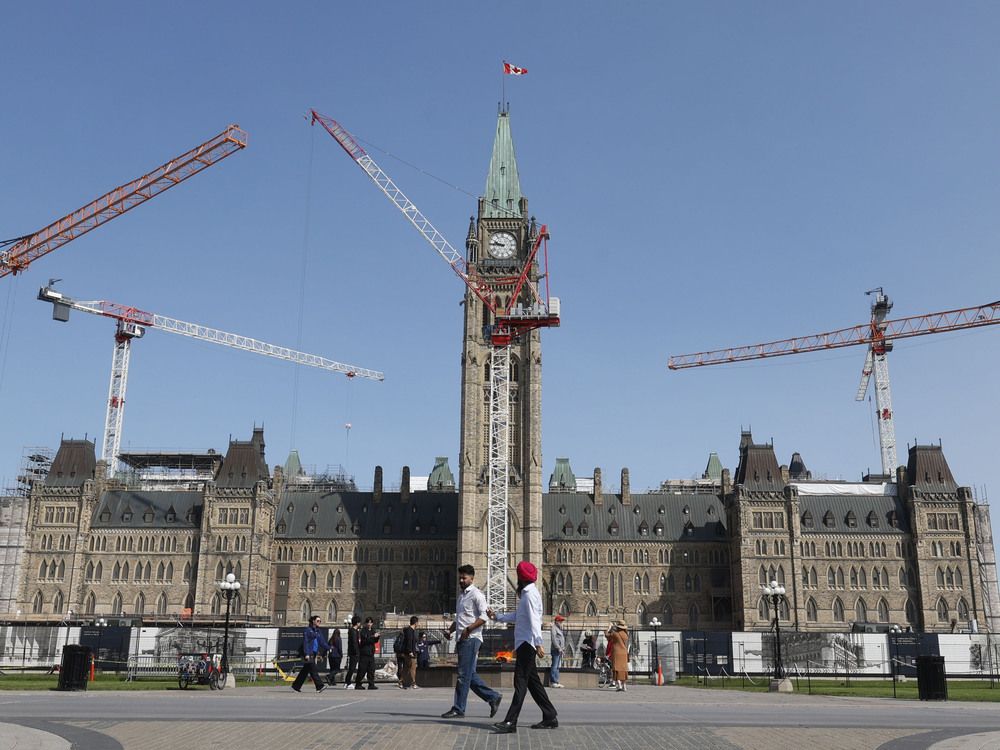
Ottawa’s budget watchdog is sounding the alarm after releasing its latest fiscal outlook, calling the federal government’s current fiscal track as not sustainable.
“The general and most important fiscal anchor for any government, is a declining or at least stable debt-to-GDP ratio, and this is the first time in 30 years that I’ve seen one where that ratio is going up overtime,” said interim Parliamentary Budget Officer Jason Jacques, during testimony in front of the operations and estimates committee on Thursday. “We’re hoping and certainly expecting the government as part of budget 2025 to clearly indicate what the government plans to do to address this problem, because it’s certainly not sustainable.”
Earlier in the day, the office of the PBO released its new economic and fiscal projections, which showed a $68.5-billion deficit for the 2025-2026 fiscal year, a significant jump from $51.7 billion the year before, reflecting a slowing Canadian economy and new spending and revenue measures.
The federal debt-to-GDP ratio is projected to be 41.7 per cent in 2024-2025 and will remain above 43 per cent for the remainder of the decade and into 2031. The federal debt is also expected to expand to $1.655 trillion by 2030-2031 from more than $1.281 trillion in 2024-2025.
“Compared to our March outlook, the federal debt-to-GDP ratio is 4.5 percentage points higher in 2029-30 and is no longer projected to be on a declining path over the medium term,” the report said.
The PBO’s latest outlook accounts for new measures announced by the federal government since the Fall Economic Statement, including Prime Minister Mark Carney ’s recent promise to create a $5-billion response fund for those affected by the U.S. trade war.
Combining these new measures, the PBO estimates $115.1 billion in net new spending from 2024-2025 until the end of the decade.
The outlook does not fully include all measures in relation to Canada’s new North Atlantic Treaty Organization commitments.
“Due to limited information provided, the outlook does not fully reflect the government’s North Atlantic Treaty Organization (NATO) commitment to increase defence expenditures to 3.5 per cent of GDP by 2035 and the additional 1.5 per cent of GDP spending commitment toward critical defence and security-related expenditures,” the report said.
The PBO projects the economy will grow by just 1.2 per cent in 2025 and 1.3 per cent in 2026, as the impacts from trade uncertainty and tariffs weigh on growth, with a slight recovery in 2027.
“While economic growth is projected to rebound to 1.8 per cent in 2027, structurally weaker trade conditions are expected to lower the level of real GDP by 0.5 per cent by 2030,” the report said.
Nominal gross domestic product (GDP), which is the broadest measure for the federal government’s tax base, is expected to be $12.9 billion lower annually on average between 2025 and 2030.
The deficit for the current fiscal year is $26.5 billion higher than what the PBO projected in its March outlook earlier this year, with the budget shortfall remaining above $60 billion until the end of the decade. This is assuming no new measures are introduced.
On the expenses side, the PBO estimates major transfers to Canadians will cost $132.5 billion for the last fiscal year, with those costs projected to grow to $171.8 billion by 2030-2031. Transfers to provinces will also expand from $105.5 billion last fiscal year to $130.9 billion at the start of the next decade.
Debt-servicing costs are also expected to climb, with the debt-servicing ratio projected to increase from 10.7 per cent in 2024‑25 to 13.7 per cent in 2030‑31.
Last week, Jacques told a parliamentary committee he did not know if the current federal government has fiscal anchors. He said the previous fiscal anchors set up under former prime minister Justin Trudeau included capping the annual deficit at one per cent of Canada’s GDP and a declining debt-to-GDP ratio.
The federal budget will be released on Nov. 4.
• Email: jgowling@postmedia.com

